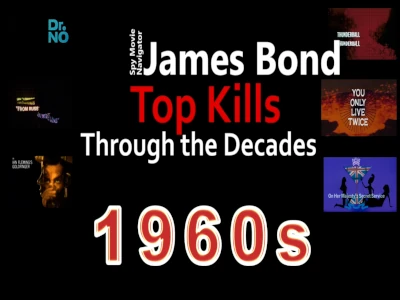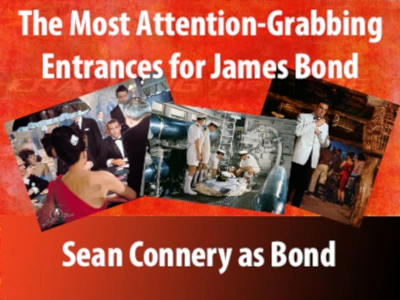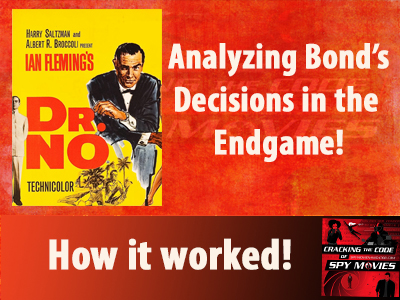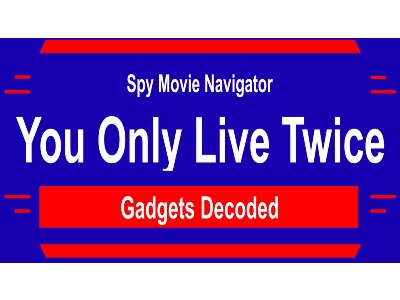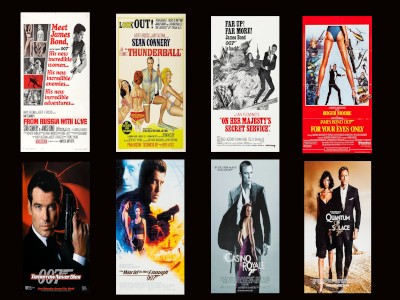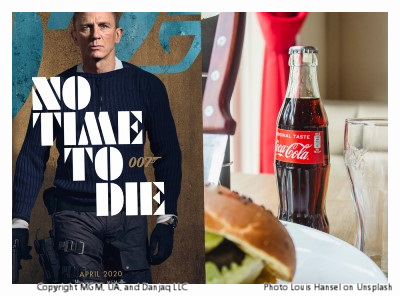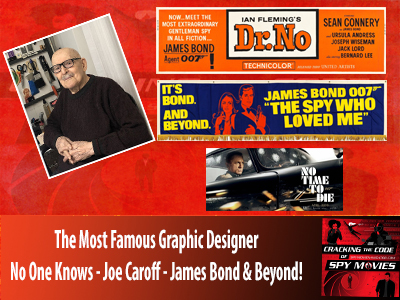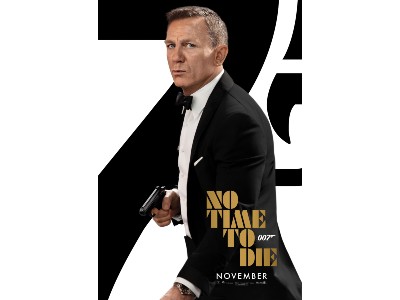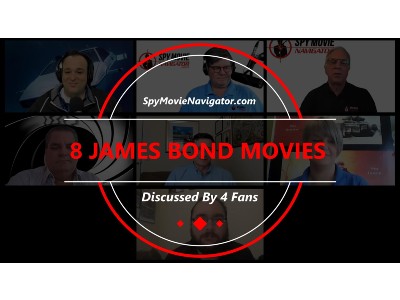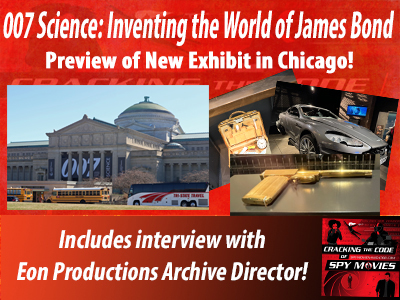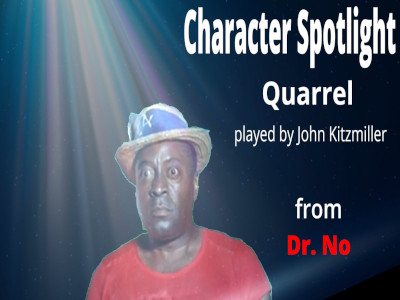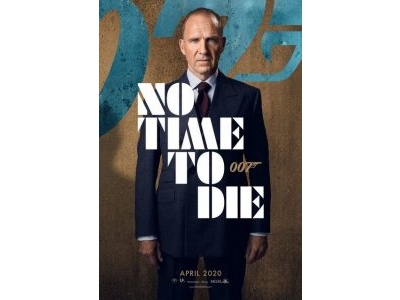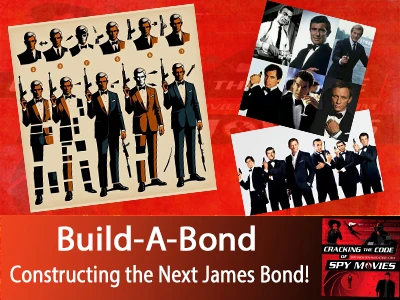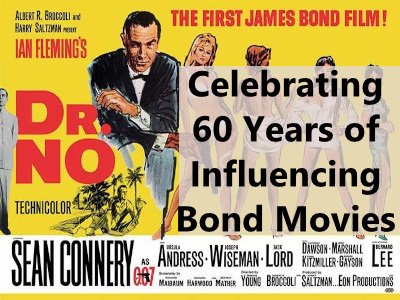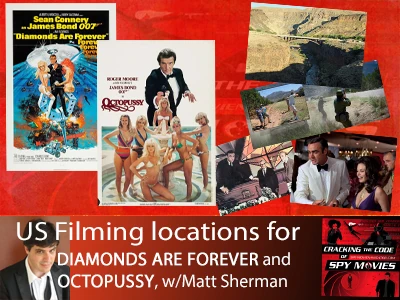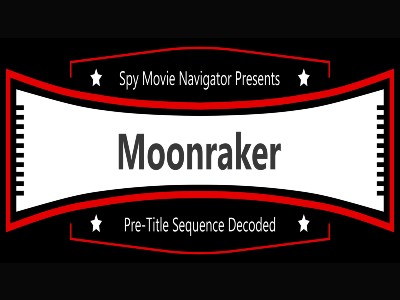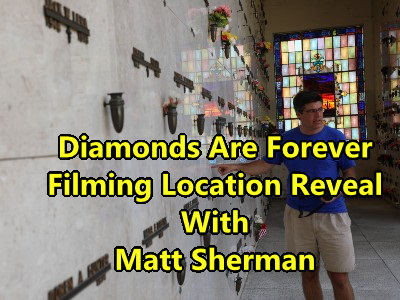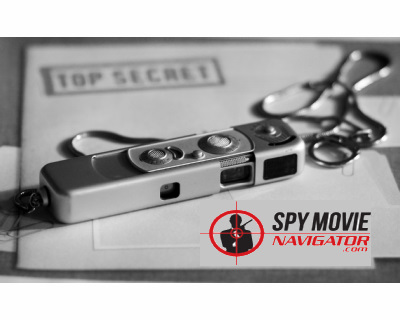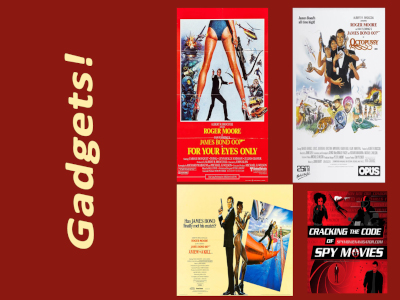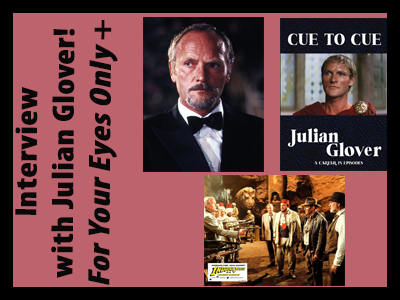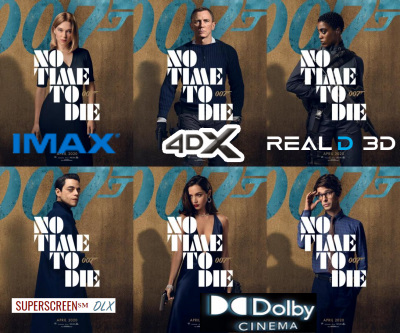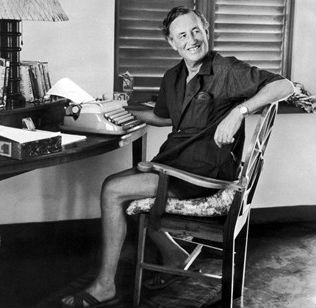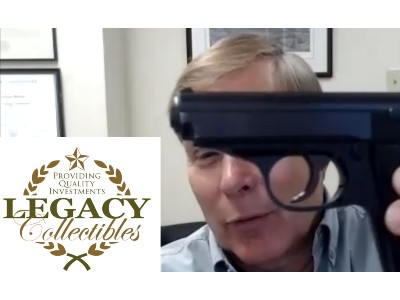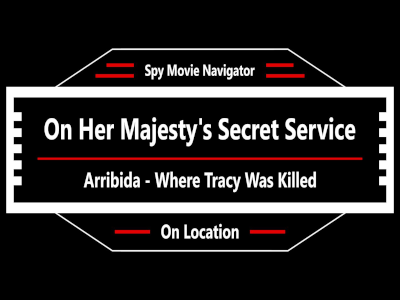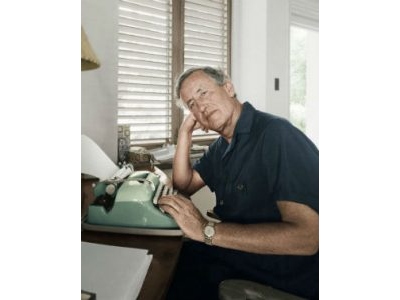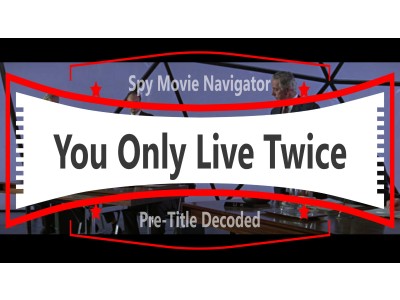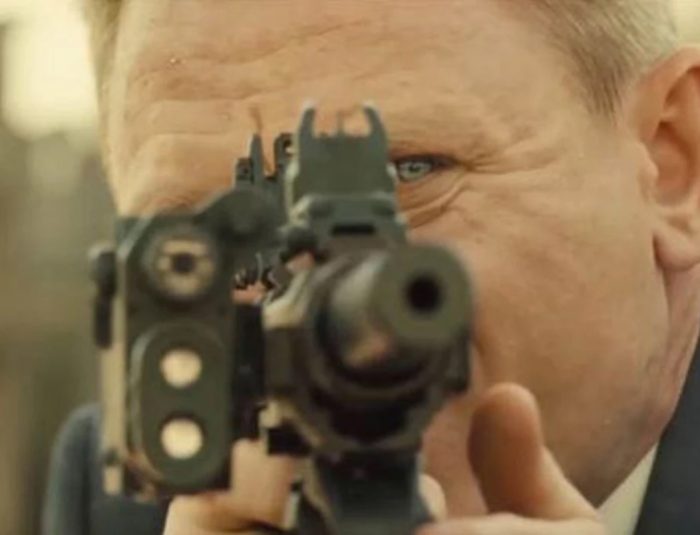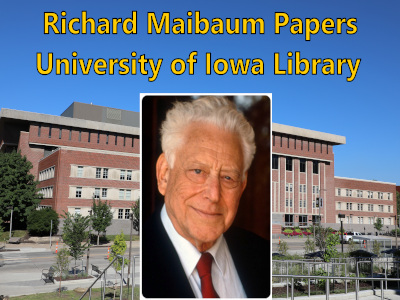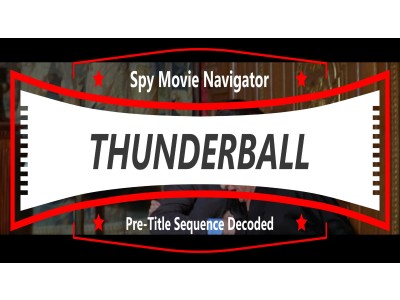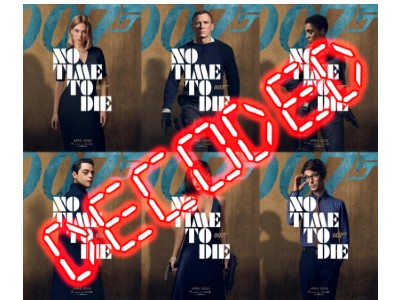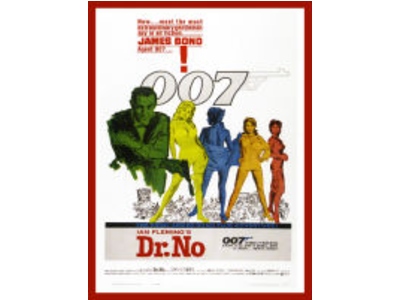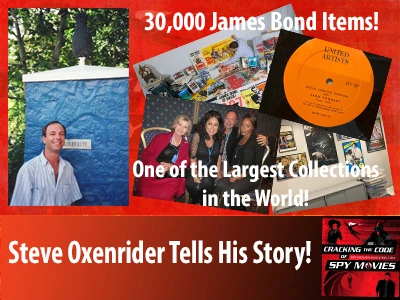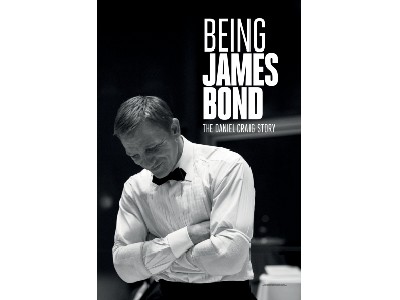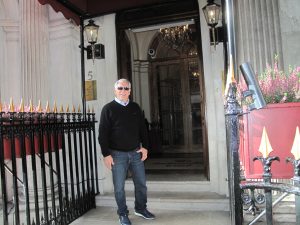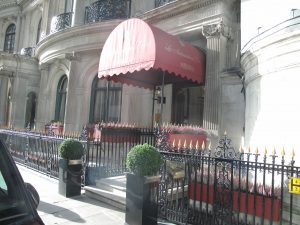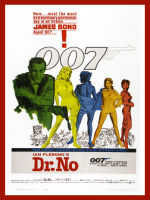Dr. No Is a Big Yes for Spy Movie Fans
This transcript is a subset of what is in the podcast. We recommend you listen to the podcast.
Dr. Yes, err No, ahh Yes, Dr. No! Why Dr. No is Dr. Yes!
This is Dan Silvestri and Tom Pizzato from SpyMovieNavigator.com – The Worldwide Community of Spy Movie Fans – Spy movie podcasts, videos, and discussions!
Dr. No, EON Productions first James Bond film based on Ian Fleming’s sixth James Bond 007 novel gets a big YES from movie-goers at the time of release in 1962 and has been a staple of Bond films ever since. Dr. No is Dr. Yes for spy movie fans, and new spy movie fans who are focused on Bourne and Mission: Impossible and more recent Bond films with Pierce Brosnan and Daniel Craig, would enjoy going back to the first James Bond film, Dr. No, to which, we think, they will also say Yes!
A Quick Movie Summary:
- There’s a disappearance of a British agent and his secretary in Jamaica
- Bond is sent to investigate
- Bond discovers Dr. No and his plan to interfere with American missile launches
- We learn of SPECTRE for the first time and of the ensuing events
When released in 1962, the US and Soviet Union were in the cold war. Each country suspicious and in fear that the other might develop more nuclear weapons than the other, attain nuclear superiority and strike first. This is what was really happening in the world, so selecting Dr. No as the first Fleming novel to turn into a film – dealing with American missile launches, was topical. Fear of inter-continental ballistic missile reigning down on your hometown was a real fear. The US was behind in the space race, as the Soviets continued to be steps ahead. But great distances between the countries offered some solace. Though Ian Fleming’s “Dr. No” novel was written in 1958 (a year after the Soviet Union launched the first satellite into space, Sputnik), the film began shooting in January 1962. This was a mere 10 months before The Cuban Missile Crisis (October 16 – 28 1962), which was bringing Soviet missiles with warheads to Cuba – just 90 miles from the US coast. Keep in mind, Dr. No was released in the UK on October 5, 1962 – less than two weeks before the Cuban Missile Crisis. It was released in the US in May of 1963.
So, the real world served as a backdrop to fuel the interest in the film, Dr. No, because nuclear war, missile development and deployment, and the ability to attack with missiles were all top-of-mind.
Curating:
A word about what we are doing with some of the best spy movies, on our website, SpyMovieNavigator.com. On our website, we are “curating” spy movies, from Bond, Bourne, Mission: Impossible and the Best of all the Rest from 1935 on. If you look on YouTube for Dr. No clips, there are hundreds. Same with most other spy movies. What we are doing, is scouring through those clips, finding the best ones that represent key scenes in the movies, assembling them in chronological order as they would appear in the film, then include our insights about why this scene is important to the film, how this film or scene impacts other spy movie films or scenes to follow, and how other spy movies or real-life incidents that preceded Dr. No may have influenced this film.
So, you can go to any genre category, like 007, Bourne, Mission: Impossible, of the Best of the Rest category and see the clips, and read the editorial commentaries and insights for each clip. If you’re a spy movie fan, we know you will love this approach. Of course, we always look for your insights as well and will promote the exchange of ideas via forums and our Facebook chats.
In short, we will all learn something new from the “curated” films, which is a unique approach to looking at spy movies in general. We will have many other podcasts on these topics, not just individual film podcasts. And we have videos on our website detailing spy movie film locations that we have visited in person. We are the Worldwide Community of Spy Movie Fans!
Dr. No Intro Poster and Theme Song
For those listening to the podcast and are not on our website, we will go over each of the scenes we have selected for Dr. No, and describe what is happening and why it is key.
In our first clip for Dr. No, is one of the publicity posters used to promote the film and the theme song music first associated with the EON Production James Bond films!
So, you have a visual: the poster is horizontal, bright yellow background, bold red letters and has six figures on it. All the way to the left is Dr. No, halfway off the poster, then James Bond in his tux of course, and smoking gun with the silencer. As your eyes move right, you see Honey Rider, then a woman for who there is no consensus who she is. Some say it is the back of Honey Rider. However, it doesn’t look like that to us. Then there is Sylvia Trench in Bond’s shirt, then Miss Taro is in a beautiful dress.
EON created a masterpiece and a James Bond franchise that has thrived for decades – and Dr. No is the first film they produced.
The marketing poster
We encourage you to take a close look at the poster on our website, SpyMovieNavigator.com. One of our colleagues, Reno Lovison, offered to do an analysis of the poster for us and he sent us this piece we will cut to now.
By Reno Lovison
By 1962 when the film version of Dr. No is released, Ian Fleming’s books featuring the cold war secret agent and Bon Vivant, James Bond were all the rage.
The public was hot for a no holds barred film that would introduce a real flesh and blood Bond.
The film poster for Dr. No features Bond as the dominant figure slightly off-center with a smoking gun in one hand and the signature sixties symbol of cool, a cigarette in the other, signifying a controlled relaxed man of action.
The bright yellow background is like intense sunshine referring not only to the film’s exotic tropical Jamaican locale, which is further depicted by the simple inset line drawing of palm trees, but also to the heat of passion promised by the four sexy female figures each in various stages of undress and striking provocative poses.
The presumed title character of Dr. No is mysteriously cut in half and barely makes it on to the poster’s left edge. It is clear that he is not the hero of this film despite the name.
Interestingly the evil Dr. No is dressed in white while Bond is in a very dark blue suit which belies the standard code of cinema that the good guy always wears white while the villain is traditionally in black.
This signals the upside down and unpredictable world of espionage where things are not always what they seem, and it is impossible to rely on your previous experiences.
The bright red text shouts out what is possibly one the shortest movie titles of all time and announcing the all-important fact that this is THE FIRST JAMES BOND FILM!
Note Ian Fleming’s name is also in red making the point that this is based on his already well-known books and setting the stage for his branding empire.
There are few films particularly up to this time that feature the book author’s name. In most cases, you will be lucky to find a short line in the credits that says something like “Based on a book by…”
Saying that a film is based on a book is a signal that this film has an added level of sophistication and worthiness. It might be an action-adventure and it might be sexy but it is based on literature. This is an important distinction in this time of changing morality of the 1960s and the changing morality in film.
It might also be argued in this case that it is based on what many considered a book in the realm of pulp fiction, and in that way promised to be a little edgier or forbidden.
Men wanted to see sexy women on the big screen and women wanted to be the desired liberated and strong women Fleming portrayed.
It’s important to note the women in this poster are not victims or being controlled in any way. The posture of the second figure from the right is a classic power pose, she is using her sexuality to lure you towards her, but she is not cowering or submissive.
The next figure almost dead center is barely nude with her back toward you but very much aware of who is behind her and again is drawing you toward her and very much in control.
The sexy two-piece white bikini worn by Ursula Andres, who plays Honey Rider, will become the iconic symbol of the sexual revolution and was quite scandalous at this time. But again, notice her hip thrust out indicates that she is in charge of her body and the situation.
The poster designer Mitchell Hooks manages to give the budding film star, Sean Connery, prominence though he is still dominated by the author Fleming. Note he is billed as playing the part of “007” a man referred to as a number which was a symbol of the nascent computer age. Is the number seven lucky? Maybe so.
It is important to keep in mind that for many theatergoers this was their first introduction to this man who will become an icon and a symbol of cold war espionage, as well the symbol of the post-WWII “modern” male and a soon to be movie icon.
We’d like to thank Reno for this detailed analysis of the main Dr. No publicity poster. Reno produces videos and podcasts on a variety of topics, and you can find him at renoweb.net.
And we’d like to add a couple more notes:
- Ian Fleming’s novels in 1962 were experiencing huge growth in popularity in the United State because President Kennedy at that time included From Russia With Love as one of his favorite Top 10 novels! So, interest in James Bond was high. Now here comes Dr. No!
- On another note, 1962 was just before the large explosion of the sexual revolution in the US and world, and countries like Ireland had problems with this poster and required changes to be made – like putting a black dress on Honey Rider, and covering up the other Bond Girls on the poster one way or another. There is a nice book entitled: “James Bond Movie Posters: The Official 007 Collection” by Tony Nourmand. The edition we have goes from No to Die Another Day.
And always check out our main website at SpyMovieNavigator.com – The Worldwide Community of Spy Move Fans!
Dr. No – Gun Barrel – Maurice Binder Rules!
Dr. No opens with what is now an iconic scene that is used in every Bond film. Dots move across the screen. They then move into “Harry Saltzman & Albert R. Broccoli Present”. There are a couple of things about the dots when you look at it in different ways. One is that it could be bullet holes. Of course, James Bond is all about guns and danger and everything else. It’s also like, when you see the two of them coming together across the screen, its like the double-0 in 007. So you’ll see it over and over again in Eon Productions Bond movies that you get the two dots moving across the screen. I like to think about them as the double-0 in 007. Then one of those dots encircles the ampersand in the “Harry Saltzman & Albert R. Broccoli Present”.
Once that comes up on the screen, it expands out and you have the gun-barrel scene. This is where Bond comes out, turns, and fires at the camera. And then the gun barrel goes red as though it is dripping with blood. This is the first time we see this scene and it is used in future Bond films. You might think it is Sean Connery but really it is Bob Simmons. He was Sean’s stuntman who actually does this in this version of the film. In later films, they do bring Sean Connery to do this shot.
Maurice Binder created this whole gun barrel scene as well as the title scenes many Bond films from Dr. No through License to Kill. He died in 1991.
Three Blind Mice and the Death of Strangways
In the title sequence, with the exotic setting in Jamaica, we are immediately intrigued with the opening scene, with the words Dr. No flashing on and off the screen in green, purple, red, blue, and the transition to the colorful silhouettes of dancing women with island music playing. It’s very 60s but at the time was very cool!
Then we see three blind men walking the streets in Jamaica, and we don’t know what to make of them. The tune “Three Blind Mice” is playing while we see them walking, which makes us think we should pay attention because maybe these three blind men are important. We just assume they are part of the scene, background figures, but yet there they are – and the camera spends a lot of time on them, following them as they “blindly” make their way down streets and finally to the Queen’s Club (Private Members Only).
Ian Fleming used private clubs a lot in his novels. Le Cercle at Les Ambassadeurs all throughout his novels he brings up private clubs, really showing high society.
So, are the three blind men members of this private club? Ah, can’t be as they are all carrying their tin cups for people to drop coins into for them. This is the club where Strangways plays cards each evening. He then leaves at, we think about 6 pm, so he can report into MI6 with his secretary at his place. Then he could return to cards. How do we come up with 6 pm? They don’t show a clock in the room, nor do they mention the time. There was one shot where they cut to London where they are going to receive the transmission. There is a clock on the wall that says 12:05. We’re thinking that’s 12:05 am in London, which would be 6:05 in Jamaica.
Strangways is dressed is a white, linen suit, and the surroundings are peaceful, tranquil, elegant and high-society – which makes us wish we had lives like that. So nice!
These three blind men play a critical role in the entire Dr. No story, as they are responsible for two very key deaths in the plotline and are the reason James Bond ends up in Jamaica. Here is the set-up for the death of Strangways, the MI6 operative in Jamaica.
So, in the film, we see Strangways excusing himself, as he always does at 6 PM, and exiting. So, this is routine, but we don’t know if the three blind men outside the club are routine. Strangways is walking towards his car and must pass the three blind men. He takes some coins out and throws them in the cup of the first blind mice with the red hat on, then proceeds to open the door of his car. When he turns and opens his car door, we find out a great deal about these three men. All three of them turn and shoot Strangways with pistols equipped with silencers. No one else is around to see them. Then they grab his body and throw it in a hearse which speeds around the corner driven by an accomplice.
We will see this hearse again!
In the next scene of this clip, you see the Strangways mailbox. Then the same three men break in, kill Strangways’ secretary, rummage through his files and take the folders entitled, “Crab Key” and “Dr. No.”
The second clip we selected here goes into more detail of the secretary’s murder. Keep in mind, Strangways is the MI6 operative in Jamaica and has been investigating Dr. No. Bond now is being called in to investigate the Strangways’ and secretary’s murders, and to see if there is some connection between these, Dr. No, and the interference with American missile launches.
Here you get a better view of Strangways place and more details of the secretary murder. We will see Strangways house again as Bond investigates this location later in the film. Here, his secretary is setting up his call, by saying “W6N W6N calling G7W.” G7W is in London. For those of you who play trivia games, W6N and G7W are the types of questions those games like to use. Then the three blind men strike again and murder her, carrying her body off after retrieving the Crab Key and Dr. No files. At the 55 second mark, you will see a framed photograph behind one of the three blind men in the background, on a shelf. This will prove to be an invaluable lead when Bond investigates this location – a lead that will lead him to Quarrel who plays a major role in the film.
As an aside, the secretary, Mary Trueblood, is played by a local Jamaican, Delores Keator, who actually owned the building they used to shoot these scenes.
One other thing about the Three Blind Men occurs a bit later in the film. When Bond and Superintendent Duff arrive at Strangways’ place, they get out of the car. The Superintendent looks backward toward the street. There is a tree that is somewhat obscuring them, but the Three Blind Men are walking down the street. The look on the Superintendent’s face made me wonder if he was in on the crime. Bond misses it as he’s walking toward the building and this happens behind him. It’s a very short shot so look when they get out of the car or you’ll miss it.
So, we see instantly, Dr. No is going to be a captivating film, with murder, intrigue and mystery, These clips set up the rest of the movie, as now Bond must investigate. Strangways, though dead, will play an important roll in the film as Bond tries to put the pieces together. We will see similar scenarios in Live and Let Die, where Bond must investigate the murder of three agents, and we see agents killed in The Living Daylights in Gibraltar, View to A Kill, Octopussy, and in more Bond movies to come. We will see similar scenarios in Mission: Impossible, and even the Bourne series.
This opening scene with the three blind mice walking was shot on Harbour Street in downtown Kingston, Jamaica. The Queen’s Club, where Strangways is killed is now Liguanea Club at 80 Knutsford Blvd in Kingston, Jamaica.
Bond, James Bond
This Dr. No clip is one of the most critical and important scenes in the entire James Bond 007 franchise. The interaction between Sylvia Trench, in red, and James Bond at the baccarat table at Le Cercle at Les Ambassadeurs in London sets up the entire Bond, James Bond scenario in the films. This is the very first time in film history that Bond says his name like this. And Sylvia Trench is truly the first Bond Girl. So, this clip is one of the most important clips in any James Bond 007 film. This is the scene where he receives word that he must leave and head to Jamaica to investigate deaths of J branch MI6 members. Le Cercle at Les Ambassadeurs is the Casino that Bond is in. We visited Les Ambassadeurs in London – we could not get in as it is private, but we were at the doorway, awning, and sign, which is the establishing shot for this scene in Dr. No. It was a very cool building and the security guys were nice to let us take some pictures. It felt great to be on the steps of Les Ambassadeurs, knowing what an important role this place played in the Bond films. It was a pleasant day, the entryway was elegant, it was Bond, and we were standing right there! And guess what? So was Fleming once!
As an aside, Cubby Broccoli, who along with Harry Saltzman were the original producers of the Bond films, set up a meeting once at Les Ambassadeurs for Fleming and Irving Allen to talk about maybe turning the Fleming Bond novels into movies. Allen was not impressed and told Fleming the stories were not even good enough for television. So, we were standing at the door where Fleming walked through for this meeting! T
We see Bond here as cool and elegant. Again, in the “Dr. No Documentary” by John Cork, it comes out that a stylistic decision was made by Terrence Young and the writers: to take the elegance, wit, and sophistication of Fleming’s writing and infuse James Bond with those characteristics. And forever, Bond is cool, elegant, witty and sophisticated.
This scene is exceptional. We see this fancy club, we see people sitting at the chemin de fer table, meticulously dressed. We see a lady in red, and several others sitting around the table enjoying this aspect of their lives. And there is a gentleman across the table from the lady in red, in a tux. You see only his sleeves, hands, chest. She is losing and he is winning. Who are they? Will their lives entwine?
When she loses more money, she asks the house to cover, then writes a check out for more money. At which point the gentleman in the tux says, “I admire your courage, Miss. . .” To which she replies, “Trench, Sylvia Trench. I admire your luck, Mr…?” To which the gentleman in the tux replies coolly, while lighting a cigarette: “Bond, James Bond.” This is the first time in Bond movies we see Bond and hear the famous line, “Bond, James Bond” and we are now set up to hear this for all of time. Who in this world does not know this line?
From this scene, we know absolutely Sylvia Trench will be the first Bond Girl.
How do we know that Sylvia Trench will become the first Bond girl? Because of several overlooked clues that she gives us in this scene. Want to know what to look for? Well, let’s look into this together right here and right now.
- First, when she is shown losing for the first time, she raises both eyebrows, which is often a sign of surprise. This could be pleasant or not, or a sign of acceptance – like when you see a friend and they smile – their eyebrows go up. But watch her face closely the entire scene! She just lost to Bond. So, raising her eyebrows is certainly acknowledging the other person, drawing attention to herself. As your eyes are in full view and opened wider – it’s almost like saying hello – a signal – from a distance directed at your target. And she parts her lips while doing this – a sign of sexual submissiveness – which is very important here.
- She loses again, and again she raises both eyebrows, as she says
“I need another 1000” Again, opening up to Bond, almost surrendering to him.
- And here is the big clue – we have been watching her eyebrows closely: when Bond says to her, “I admire your courage, Miss…?” And she says, “Trench. Sylvia Trench.” She has her head downwards, and her eyes upwards – which is a submissive eye expression. She then says to him, “I admire your luck, Mr…” Right here is the secret clue! She raises only her right eyebrow! That is often a sign of interest in the person you are talking to, maybe even submissiveness as you are looking for attention and it is a sign of less aggressiveness. But it can also be a sign of power – as in “I want your name, now.” But it is definitely a sign of opening up to that person. Here she tells us, she will be the first Bond. James Bond. Girl.
- And you will notice later in the film, on Crab Key, when Honey Rider walks out of the ocean and Bond sees her for the first time, he raises his left eyebrow – so yes, she will be THE Bond girl!
Its movie origin is right here in Dr. No – and now forever, he is Bond, James Bond.
One interesting thing from this scene is the way we first see Bond. A gentleman comes into Le Cercle and drops off a note for James Bond. That’s the first mention of James Bond in the series. The chemin de fer table is where this scene with Bond and Trench happens. As we mentioned earlier, we don’t see Bond right away. Our first glimpse is from behind and to the side. We see only the back of his head, his sleeves, hands, and his chest. Right before he says “Bond, James Bond” he lights a cigarette and we see his face. This technique of slowly showing Bond in pieces at the start before you see his face is used with some of the later Bond actors when we were introduced to them in future films. This concept of a slow reveal of the main character was first used in the 1939 film, Juarez.
Here we see a glimpse into James Bond’s lifestyle – here, he is at a private club casino, playing chemin de fer in a tuxedo. What a lifestyle that we all look at and admire, wish for, long for – can we be, in some small way, Bond, James Bond?
We see a further glimpse into Bond’s lifestyle when he says to Miss Trench a bit later, “You’re out to get me” and she replies, “that’s an idea.” When Bond gets interrupted by a message that he must leave (to go back to MI6, to discover his next mission), she gets up as well and they stroll out together. They will meet again. As Bond hands her his card he says, “My number’s on the card.” Very cool.
In fact, we do see Miss Trench later in Dr. No and again in From Russia With Love. Sylvia Trench was played by Eunice Gayson, who passed away in 2018 – the first Bond girl to pass away. She played it well.
Getting the Walther PPK
Bond fans know that often Bond uses a Walther PPK pistol as his main weapon. In Dr. No, we learn he was using a Beretta and in this scene, M informs him that he will no longer use the Berretta, but a Walther PPK, which the CIA swears by. The person giving Bond the PPK in this scene is Major Boothroyd. In real life, Ian Fleming got a letter from a person named Geoffrey Boothroyd, a British gun collector firearms expert, who was a fan of his work. He suggested to Fleming that a Beretta is not the right gun for Bond, and ultimately recommended the Walther PPK! Fleming, as he so often did, named Boothroyd in the movie after this real person. A Beretta (a .25 caliber) has far less stopping power than a Walther PPK (a .32 caliber). Bond used a Beretta 418. This was really a problem for Bond in the book, “From Russia With Love”. This book was published the year before “Dr. No” was published. “From Russia With Love” was published in 1957 while “Dr. No” was published in 1958. In the movie Dr. No, it was a Beretta m1934 more than likely.
There is some controversy about which has more stopping power as there is an argument that the Beretta M1934 9mm Short round is better than the Walther PPK which chambered a 7.65 mm round. But if you own the Ultimate Edition of James Bond 007 DVD sets, Volume 4 has Dr. No. On the special features extras disc, there is a piece featuring Geoffrey Boothroyd setting the record straight on this! He prefers a .44 Ruger Magnum, but it is large – too large to carry in a shoulder holster. So, he settles for the Walther!
But the producers and writers, sticking to the “Dr. No” book, decided to take the Beretta away in the first movie, Dr. No. They did this and, referred to an incident (the silencer of the Beretta catching in the in Bond’s clothing which almost got him killed) in the novel “From Russia With Love”. Remember that the book was published before “Dr. No”. But the movie From Russia WIth Love came out AFTER Dr. No. EON Productions and their staff took liberty with sequential incidents from the books as they moved them to the movies. Not always in order!
We have also noted at the beginning of this clip, M tells Bond he is going to Jamaica. M will send the documents he needs to the airport in a “destructor bag.” This is the first we have seen in any spy movies the use of a destructor bag – sound familiar? The Mission: Impossible TV series started in 1966, and as we all know if you remember the series or the Mission: Impossible movies now, the mission begins with a recorded message, that says “this tape will self-destruct in five seconds.” Here is the origin!
Again, since this is the first Bond film, we are learning a lot about Bond. Note here Bond says he’s used the Beretta for 10 years – so there is a history we do not know about. And now, Bond has the weapon that we are all familiar with – the Walther PPK – and this is where and when he gets it!
Bond Arrives in Jamaica
Bond arrives in Jamaica via Pan American airlines. He is still flying Pan American airlines in Licence to Kill when he goes to Key West Florida in the US – you remember when he is leaving after Felix Leiter’s wedding to Della, he is at the Key West airport and walks up to the Pan American counter. Well, Bond and I have something in common.
When I flew to Jamaica I was on Eastern Airlines, we landed in Miami first, and the pilot landed so hard he damaged the landing gear, an Exit sign broke off from the ceiling and swung down on its wire just past a passenger’s head, and we were delayed in Miami for several hours because the plane was grounded. So, Bond and I both flew on airlines to Jamaica that are no longer in business! Both ceased operations in 1991.
Well, when Bond lands in Jamaica, we gain insight into his thinking, questioning the situation, being suspicious. We notice a woman photographer licking her flashbulb, a character watching from the balcony, and the driver who has come to get Bond. Now the photographer in this scene is Marguerite Lewars, who was Miss Jamaica. So licking the flashbulb, although a useful thing to do to make better contact with the socket – is also a sexual thing here. This beautiful woman, in 1962, is licking a flashbulb in a major motion picture.
Back to the driver: The driver approaches Bond outside only after Bond gives up a taxi to two women who were trying to get a taxi. Was this a bit late? Bond’s instincts tell him not to trust this driver and he makes a call, while, unbeknownst to him, Felix Leiter watches. Bond discovers his Government House contact did not send a driver. So, Bond figures maybe he can get some info from this driver. Bond gets in the back seat of this Chevy convertible, and they drive off. Leiter is trailing, but Bond does not know Leiter yet. They try to lose Leiter and pull over to the side. Then Bond gets the better of the driver, who takes cyanide instead of talking. Although this is a car chase, Bond is not driving. So it is not really considered Bond’s first car chase. The scene is important because we do not know Bond or who Leiter is yet either. We also don’t know if the driver of the Chevy convertible may have led Bond to the info he needs for this mission. We are learning about Bond’s character, toughness and focus for the first time in this scene.
The death of the driver does not bother Bond at all. Bond loads the driver into the back seat of the convertible and drives himself to the Government House, quipping to the Government House personnel, “Sergeant, make sure he doesn’t get away.”
The Government House shown here is actually King’s House on Hope Road in Kingston, Jamaica.
Meeting Felix Leiter for the First Time
Felix Leiter plays a major role in many Bond films to come (played by 6 different actors so far), but Dr. No is his first appearance and his first meeting with Bond. First played by Jack Lord, then Cec Linder in Goldfinger, then Rick Van Nutter in Thunderball, Norman Burton in Diamonds are Forever, David Hedison in Live and Let Die, John Terry in The Living Daylights, David Hedison again in License to Kill, then a great one Jeffrey Wright in Casino Royale and again in Quantum of Solace. Jack Lord, David Hedison and Jeffrey Wright were the hands-down best Felix Leiters. We own Hedison’s autograph. And there are rumors that Jeffrey Wright may return for Bond 25 – hoping that he does. He is excellent.
In this scene, we learn more about Bond’s dexterity and his ability to fight. Cornered by Quarrel (played by John Kitzmiller) and held in check by Puss Feller (played by Lester Prendergast), the alligator wrestler who owns the club, Bond fights his way out and gets the better of them both. He throws them into cases of Red Stripe beer – of which we have had many in Jamaica – until Felix Leiter walks in behind Bond with a gun on him. For a moment, Bond thinks he has been out-maneuvered, but Felix introduces himself as an ally from the CIA. Because Bond went with the driver at the airport, Leiter and Quarrel were not sure of Bond’s allegiances – now they understand who he is.
Bond’s First Car Chase
We have come to expect car chases and virtually any other kind of chase in spy movies now, and especially in Bond movies.
Now, in real like this does not happen very much! We have reached out to the International Spy Museum in Washington DC in the US, and we will be doing a podcast with them on the very subject of the differences between what happens in spy movies versus what happens in the real world of real spies! So, look for our podcast on that. In the meantime, there was a great article on July 31, 2015, in the online Vanity Fair on this subject, entitled, “14 Ways Spy Movies Are Nothing Like Real Life” by Julie Miller. She discusses how Dr. Vince Houghton, the historian and curator of the museum, said: “High-speed car chases only happen when the mission goes very, very bad.” He suggested that it is always better to blend in.
Despite real life, in movies we now expect it. Here is James Bond’s first real car chase, where he is driving and eluding pursuers. Here he is driving a lake-blue, English Sunbeam Alpine Series II. He is on his way to Miss Taro’s place (played by Zena Marshall) for some fun, but she is in on the plot to eliminate Bond. So, on the exact way Taro told him to go, he is pursued by another vehicle whose occupants are determined to kill Bond. This is the hearse that the three blind men loaded Strangways into after they killed him – so we assume this is the three blind men once again, and for the last time. For spy movies, we will see this same concept, of course, repeated over and over again: car chase scenes, and other vehicle chase scenes – trains, helicopters, running. These are now expected in spy movies; many more Bond films, Bourne, Brit planes chasing a train with German spies in the 1936 movie Secret Agent and other movies (like Bullit, 1968). But they are never-the-less still exciting, and somehow the stunts are more and more dramatic.
Fortunately, Bond eludes the pursuers and they crash off a cliff with the what has become the fiery crash scene in many spy movies to come. Of course, in real life, in general, cars don’t explode and catch fire in a crash. Even the American TV show, “Mythbusters”, at one time fired bullets directly into the fuel tank of a car and nothing happened. It is possible but unlikely!
Anyway, Miss Taro is surprised when Bond shows up, and she gets a call, they have some fun, Bond fakes car trouble and calls a taxi for them to go out, and she gets her into what she thinks is a taxi, and is taken off by Superintendent Duff. After she is out, Bond is coolly awaiting whoever it may be to show up and try to dispose of him So here it is!
The Professor Dies – And You’ve Had Your Six
In this important clip, we see the very tough and dark nature of James Bond – here, he is a cold-hearted killer as he tricks Professor Dent into thinking he, Bond, is asleep in the bed. Or what does Dent think? He doesn’t know Miss Taro has been extracted from the premises. So, does he care if he kills Bond and Taro? We don’t know. But we must remember he has already failed to kill Bond with the tarantula and Dr. No wants Bond dead. With Miss Taro out of the picture, but unknown to Professor Dent, Professor Dent is coming to Taro’s house to kill Bond. While Bond is cooly waiting for Professor Dent’s arrival, he plays cards. The scene is set – the bamboo room accents add to that exotic island feeling. Bond pours two drinks and removes his coat to put on the sofa with the drinks on the cocktail table. It looks as if he and Miss Taro had been drinking together. The lighting is just perfect as you see the cards. The shadow of the ceiling fan rotates over the cards. He tosses the bedclothes on the floor, then assembles the pillows and sheets to make it appear someone was sleeping. “Underneath the Mango Tree” is playing and “underneath the moonlit sky” is heard as he walks past the shutters with the moonlight beaming outside. Again, Terrence Young, the director, is aware of the song’s lyrics:
“Underneath the moonlit sky
Me honey and I
Come sit hand in hand
Underneath the moonlit sky
Me honey and I
Come make fairyland”
(By Monty Norman, sung by Diana Coupland)
And Bond is sitting hand in hand with his first love – his weapon and silencer, making “fairyland” – a whole different world than what most ordinary people are used to. Here, we see Bond in HIS world – him as an assassin.
Then he hears someone coming. The Professor unloads his pistol into the figure in the bed. Bond yells, “Drop it, Professor. And behind you.” Dent drops the weapon onto the bedclothes on the floor. Then we see Bond coolly waiting, confronting him, talking calmly. He even sets his gun down and lights a cigarette. Dent tries to pull his gun back over to him by dragging his foot on the bedclothes. He succeeds, picks up the gun and shoots at Bond. But the pistol just clicks. Then Bond says coolly, “That’s a Smith and Wesson and you’ve had your six”. He shoots Dent, now unarmed Dent. When Dent falls to the floor, Bond shoots him again, killing him. For Bond fans, this is the first EON Production Bond movie – and this is the first kill we see Bond make. Bond as an assassin. Fleming said once about the character of Bond, he is a blunt instrument of the government.
Of course, we will hear Underneath the Mango Tree one more time!
Miss Taro’s house in the mountains in the film is a fictitious place. In real life, it was filmed at what is now the Couples Sans Souci resort in Ocho Rios (which used to be the Grand Lido Sans Souci Hotel.
Honey Rider, and “No. I’m Just Looking”
OK, Sylvia Trench was the first real Bond Girl, and you had Miss Taro, but Honey Rider is remembered as the first WOW Bond Girl as she walks out of the waters at Dunn’s River Falls in Jamaica in Dr. No. Ursula Andres, who played Honey Rider, set the standard and a very high bar for all Bond Girls to come. This is a classic must-see scene.
When Bond wakes up to Honey Rider singing “Underneath the Mango Tree” as she steps out of the ocean – which has become of the most famous scenes in any movie – he starts singing the song too, and she then notices him. She asks him what he is doing here, and asks if he is looking for shells, to which Bond quips, “No, I’m just looking!”
We have been to Dunn’s River Falls in Jamaica, and have climbed the falls. It is a tourist attraction now and very crowded and busy – but still worth the visit. Climbing the falls (maybe 180 feet from shore to top) is tricky and requires your guide and the help of people in your group to hold you and pull you up. It is slippery and can be dangerous – but was fun to do. And to think, this was in Dr. No adds to the thrill knowing Ursula Andres and Sean Connery were just steps away! They filmed here and on Laughing Waters beach, which used to be a private section of Roaring Falls.
Here we see Honey Rider as a very strong woman, who when Bond says I promise not to steal your shells, she quips, “I promise you, you won’t either” as she wields her knife that was held on her side by a wide belt. In the original manuscript, which we examined, Honey Rider walks out of the ocean to the shore wearing just the belt and knife!
As a side note, Ursula Andres sold this bikini at auction on February 14, 2001, for the equivalent of about $60,500! Belt was included!
The Dragon – Runs On Diesel Engines!
Quarrel has talked about the island legend of a fire-breathing dragon on Crab Key and that is why no locals want to venture to this island. After Bond and Quarrel arrive at Crab Key, after meeting Honey Rider, they find that they must do battle with this fire-breathing dragon. It is a dark scene, in all respects: a night scene, and a battle with the dragon operated by merciless killers. A tough scene for Quarrel, to be sure.
The Dragon is of course, is some type of specially equipped vehicle outfitted with a flamethrower and run by some of Dr. No’s henchmen. It’s the intro of technology to do things you need to do –here, to scare people away from Crab Key. Of course, later we see Dr. No’s real technology – interfering with the USA Missile launches with a sophisticated nuclear facility and radio beam (in the movie version of course). In future Bond films and in virtually all spy movies after, we will see all kinds of technological gadgets – some to aid the spies on the good side, some to aid the evil villains they combat. But in Dr. No, there are not a lot of gadgets for Bond to use. He is pretty much on his own, finding himself in certain situations and trying to figure his way out, MacGyver-like. Yes, he got his new Walther PPK with a silencer. Yes, he uses a Geiger-counter sent from MI6. But what else? Just his wits and abilities and training as a good spy. So, in our first glimpse of Bond stepping off the pages of Fleming’s novels and into the movies, we see a man who is well-trained, is suspicious of much in his surroundings and is ready to deal with whatever might come his way.
Quarrel, who had believed in the dragon, is consumed in its flames, and Honey Rider and Bond are captured. Notice, Bond goes back to look at Quarrel after he is handcuffed, and the henchman says, “sorry we ain’t got any flowers.” When Bond walks over to look at Quarrel, it is a revealing moment where we see Bond’s more human side – where he feels bad that the guy who became his buddy in Jamaica has been killed so violently.
We learn again, that this spy business is a brutal business. Quarrel was a very likable character in this film.
I did some research on the name Quarrel and could not find it as a first name. It is a surname, meaning your family probably originally lived near a quarry. Of course, in the dictionary, it is an argument, etc. If anyone of our listeners knows, shoot us an email! Dan@SpyMovieNavigator.com or Tom@SpyMovieNavigator.com
The swamp where they filmed this scene is at Falmouth, about 40 miles west of Ocho Rios.
Meet Dr. No and SPECTRE
In Dr. No’s lair, Dr. No confronts Bond. His lair is exquisitely detailed and furnished with the finest things. A huge aquarium, artwork everywhere, rich, ornate carved wooden furnishings, silver candelabra, crystal goblets – the best of the best. And we learn of SPECTRE for the first time – and we will hear about this evil organization in many EON Production Bond films to come. Special Executive for Counter-Intelligence Terrorism, Revenge, Extortion. The West and East refused his services . . . so he is out to show them how short-sighted they were. He lost both hands in a radiation accident in the film. In the book, the Tongs, who he stole gold from, cut off his hands. In both cases, he has metal hands that are very powerful. There is a great dialogue between Bond and Dr. No in this clip – pay attention to all the words – they have all been carefully crafted to deliver Dr. No’s message – the West and East will pay for not taking his services. And Dr. No never fails . . . Joseph Wiseman plays Dr. No magnificently and convincingly.
As Dr. No walks away from Bond after telling his henchmen to “soften him up” he walks past the back of a portrait on an easel – to his left as he walks past. In a previous scene, when Bond is walking up those same steps to sit at the dining table, he stops for a moment to look at the portrait. It is the Duke of Wellington. Simple right? No. In actuality, this portrait was stolen from the National Gallery in London in August of 1961, before filming began in January 1962 for Dr. No, and was still missing when they filmed this scene. Brilliantly, EON Productions worked this real fact into the movie – here, Dr. No has the portrait! In real life, it was recovered in 1965, as the culprit who was in possession of the stolen portrait had been sending letters demanding that $140,000 pounds be donated to charities and that the person who stole it should not be prosecuted. Eventually, the culprit gave up and sent a letter to the newspaper, the Daily Mirror, along with a left-luggage ticket from New Station in Birmingham. When police when there, they found the missing portrait, but unframed. The portrait was brought to London and returned to the National Gallery.
And in a recent visit to London, we saw Goya’s portrait of the Duke of Wellington safely hanging on the wall, in full view of all, at the National Gallery! So, when you head to the National Gallery in London, go see the Duke. Also visit Room 34, where Daniel Craig as Bond meets his new, young Quartermaster in Skyfall, sitting on a bench in the gallery room, facing Turners “Fighting Temeraire” painting on the wall. We sat in the same location (but they used different benches in the movie) as Bond and Q sat in Skyfall! Cool. Again, fun to be at the actual filming locations and in the same space as the actors! And the National Gallery is fabulous. Go there!
The Downfall of Dr. No: No and Bond Go At It
After escaping capture, and overtaking one of Dr. No’s workers and taking his Haz-Mat suit, amazingly, Bond disrupts the interference with the American missile launch. (A Mercury capsule launch, which, in 1962, was really going on. Mercury was the first astronaut program in the US, before Gemini and Apollo. Remember Apollo 11 was the first to land on the moon). Dr. No opens the secret radio beam antenna and then, after increasing the radioactive danger level, in this scene, 007 battles with Dr. No himself. As a Dr. No film fan, you must see this turning-point clip that pits the wits and strengths of Dr. No versus James Bond. The villain must go down – literally!
The set is believable (Ken Adam, set designer), Dr. No played by Wisemen excellent, and the doomed end of Dr. No tense. After Dr. No goes down, Bond tries to find Honey Rider. He wants to save her. This is another revealing characteristic that we have come to see and know in many more Bond films. He and finds her shackled to a ramp with water rising quickly to drown her. He gets her free, and the beginning of the end is in sight!
Of course, this being the first Bond film, we wonder, why not just kill Honey Rider? Why the slow death that might allow for escape? Why not just kill Bond with a gunshot? We will ask this forever, but we think these ego-maniac, diabolical villains must think they are invincible (remember Boris Grishenko in Goldeneye: “I AM INVINCIBLE”). And as invincible, they believe they will get away with doing whatever they want to do. Having an elaborate scheme to kill their arch-villains (Bond, Rider whoever) is no big deal. And it pounds into the minds of the intended victim just who is in charge – and gives them time to think about it.
The Beginning of the End
The finale is grand of course, and Bond somehow manages to escape and with Honey Rider. And Dr. No is, well, No-More. Bond and Honey commandeer a small powerboat. They throw the two men on the boat overboard. They stop one again from getting back on the boat – just in the nick of time. The entire Dr. No complex explodes in glorious fashion, assuming all of Dr. No’s workers are lost or will be captured and dealt with later. As Bond and Honey are motoring away, after a short while, Bond says they are out of fuel. When Honey wonders what they do next, Bond says something like we can swim or. . . . “come here,” and she does.
To the rescue, Felix Leiter with a small powerboat and an armed crew sees Bond and Honey’s boat adrift. They throw them a tow rope, and this begins a scene we will see in many more Bond films. Bond and the Bond-girl stranded somewhere, only to be rescued and discovered that they are um – having some fun. When Bond releases the tow rope, look at Honey’s eyes – she is approving.
So, we see for the first time the ending of a Bond movie that we will become familiar with over the next decades. Enjoy as we close out our first Bond film podcast.
Dr. No is a big YES for all spy movie fans!
Be sure to visit our website, SpyMovieNavigator.com – The Worldwide Community of Spy Movie Fans – Spy Movie podcasts, videos, discussions and more!
